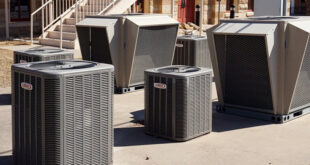
There are different types of air filters and they are rated based on a system that allows consumers, from renters to homeowners to hospital administrators, to make the best decisions about their air quality and for their system. Depending on your unit, your health needs, and whether or not you are trying to save money, you will pick a certain type of filter over others. You will also need to change them more often than others.
MERV Ratings
MERV stands for minimum efficiency reporting value, and it is the rating system for how effective an air filter is. The MERV ratings range from 1 to 16. The higher the number, the tighter the filter, and thus the pores that allow air to pass through will be much smaller. So, on one hand you effectively reduce the number of microscopic particles in the air, but on the other hand you’ve created more resistance in airflow in your system. Most household HVAC systems are not designed to manage this airflow resistance, and they become less efficient or even break. However, a hospital HVAC system is intended to use these kinds of filters to prevent the most deadly and contagious viruses from being breathed in by doctors, surgeons, nurses, and other patients. Clean rooms, operating rooms in hospitals will generally use filters with a Merv rating between 13 and 16, and sometimes even higher.
Filters with a rating of 1 are effective in blocking carpet in textile fibers, and filters with the MERV rating of 2 can also filter out sanding dust and spray paint dust. Filters with a MERV rating of 7 can block out mold spores, hairspray hair spray, pollen, and dust mites. Some filters can even block out auto emissions, humidifier dust, and Legionella.
Filter Materials and MERV Ratings
The most basic type of air filters are made of spun fiberglass material and are an inch thick. These generally have a MERV rating between two and four. These are very inexpensive, so if you don’t have asthma or other respiratory problems and want to save money, then these are a great deal. People often ask how often to change the air filter in apartments or homes. For both, you will want to change every six months if you are using a fiberglass filter since they will begin to accumulate particles.
The next type of filter is a pleated fabric filter. Typically, they’re made out of cotton or polyester paper sheets and are tightly woven to trap pollutants and air particulates, with cotton outperforming polyester in removing particulates. Cotton fibers are also capable of self-charging so they can remove even smaller particles. Pleated filters can range between 6 and 13 on the MERV scale. Typically people buy these if they have pets or have asthmatics in the home, so you will want to change them every three to six months, with more frequency with the more pets you have.
You can also choose to purchase washable, electrostatic filters that are made of fabric. On the plus side, you can own one of these for several years, but on the downside a lot of homeowners complain that they grow mold and don’t perform as well as other types of filters. Additionally some have been known to develop bacteria.
Lastly, high-efficiency particulate air or HEPA filters have the highest MERV ratings, going as high as 17 to 20. You will want to speak to a certified technician for your air-conditioning retailer before purchasing a HEPA filter if you have allergies.
 A Very Cozy Home Home Decor Tips and Ideas
A Very Cozy Home Home Decor Tips and Ideas 